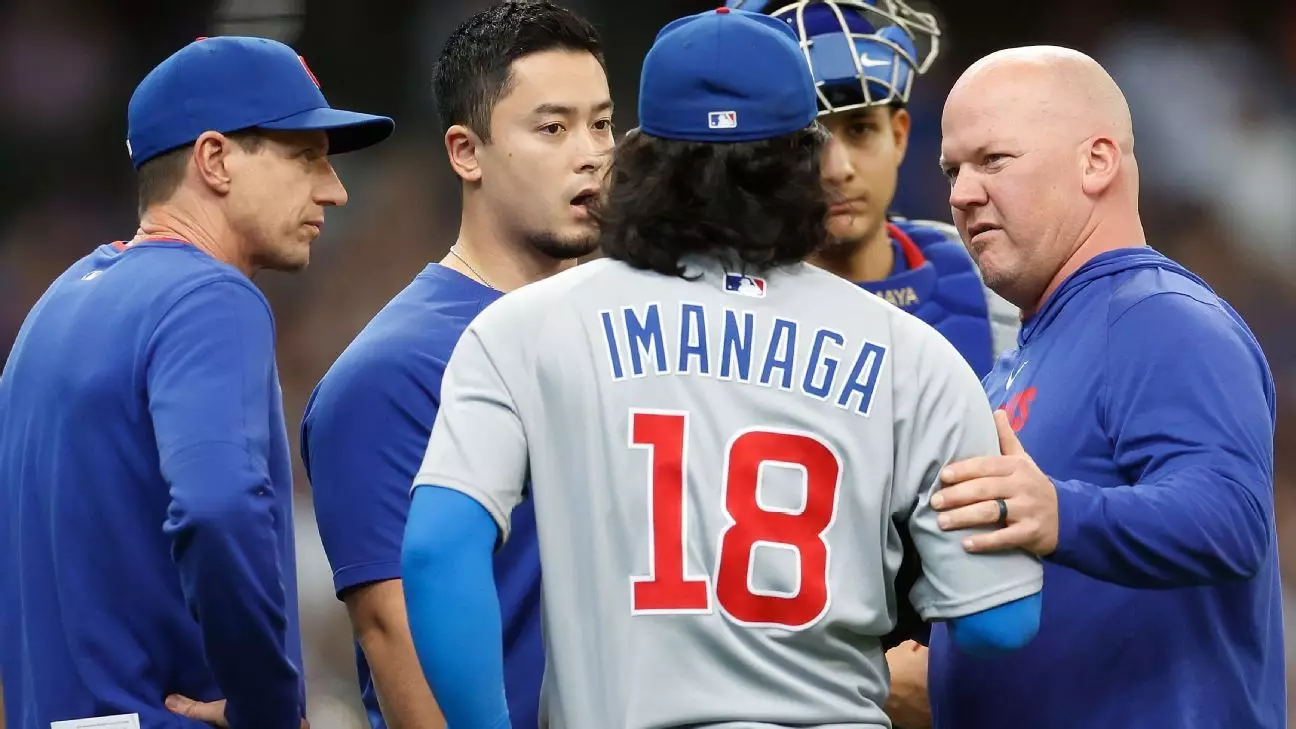In the realm of professional sports, injuries often serve as an unwelcome yet inevitable part of an athlete’s journey. For Shota Imanaga, a promising left-handed pitcher for the Chicago Cubs, this reality has become all too familiar as he navigates the setback of a mild hamstring strain. The Cubs have opted for a careful and calculated approach in his recovery, recognizing that even a seemingly minor injury can significantly impact a player’s performance and future contributions to the team.
Imanaga’s situation highlights a broader truth in sports: when it comes to injuries, communication and mental fortitude are just as crucial as physical rehabilitation. Taking to heart the positive insights shared by his medical team, Imanaga mentioned in a recent interview that it’s encouraging that his ailment does not involve the shoulder or elbow—areas notoriously vulnerable for pitchers. This perspective illustrates a mature understanding of injury management, focusing on what can be controlled while setting realistic expectations for recovery.
Individual Differences in Healing
Cubs Manager Craig Counsell emphasized the importance of treating each athlete as a unique case. Imanaga’s injury may mirror that of teammate Justin Steele, who suffered a similar hamstring strain last season. Yet, the nuances of each athlete’s physical condition cannot be overlooked. Steele’s recovery time lasted nearly six weeks, and understanding this variance can help both Imanaga and the team develop a tailored rehabilitation plan.
In conversations about recovery timelines, it’s key to acknowledge that not all injuries heal in the same timeframe. The Cubs face a delicate dance in managing their ailing rotation, with both Imanaga and Steele sidelined—each day requiring a reassessment of how best to replace their contributions on the mound. This scenario pushes the team’s depth to the forefront, testing the mettle of upcoming pitchers eager to stake their claim.
The Unseen Mental Game
Beyond physical recovery, Imanaga’s proactive outreach to Steele signifies an understanding of the mental challenges that accompany physical injuries. This aspect of injury management often goes overlooked; however, the emotional toll can be just as significant. Athletes thrive on their ability to perform, and when that ability is compromised, the mental resilience required to bounce back can be daunting. The positive reinforcement of shared experience offers solace and guidance during this tumultuous time, reiterating the importance of camaraderie within the team dynamic.
Imanaga’s reflections also reveal a deep-seated philosophy of continuous self-improvement. By taking the time to evaluate his preparation and adjustments necessary for future games, he displays a growth mindset that is essential not only for his recovery but also for long-term success in the league. Such introspection signifies a maturity that transcends age and experience, suggesting that his potential for excellence is intertwined with his commitment to personal development.
Navigating a Depleted Rotation
The Cubs’ pitching woes extend beyond Imanaga, creating a critical juncture for the franchise. With both Steele and Javier Assad on the injured list, the team must swiftly evaluate its options, ranging from young prospects like Cade Horton to seasoned arms like Chris Flexen to fill in the gaps. Each game becomes a strategic endeavor as the coaching staff must balance immediate performance needs with long-term player development.
For Imanaga, his return to the mound remains a vital goal. However, rushing back from injury could jeopardize his performance and, ultimately, his career trajectory. It is a delicate balance of urgency against prudence, a metaphorical tightrope that many athletes must walk. The Cubs’ management must not only consider Imanaga’s immediate contributions but also the implications of his health on the team’s long-term success and sustainability.
Finding Strength in Adversity
Ultimately, Imanaga’s journey through injury reflects broader themes that resonate deeply within the world of professional sports. His resilience is not solely defined by his time on the field but by how he approaches adversity off of it. With a focus on self-reflection, dialogue with teammates, and a commitment to his craft, he embodies the spirit of professionalism that serves as a beacon of hope for both him and the Cubs amid challenging circumstances. As fans and analysts alike watch this story unfold, Imanaga’s determination and the team’s strategic navigation of this moment could set the stage for what lies ahead—in triumph or challenge.

